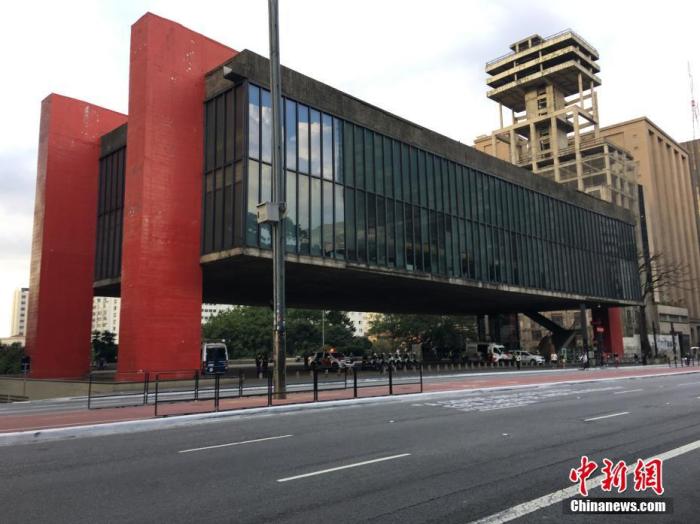China News Agency, Sao Paulo, May 6 (Reporter Mo Chengxiong) The Central Bank of Brazil announced on the 6th local time that it will lower the benchmark interest rate from the current 3.75% to 3%, the lowest level since the country adopted the inflation target system in 1999.
This is the seventh consecutive rate cut by the Brazilian Central Bank since July last year, and the reduction has exceeded market expectations. Earlier, financial market analysts believed that Brazil's benchmark interest rate will be reduced to 3.25%.
The Brazilian Central Bank said in a statement that the decision to cut interest rates was unanimously adopted, and that it is expected to cut interest rates again at the next meeting of interest rates held from June 16 to 17.
On May 1, local time, in Sao Paulo, Brazil, there was no one on the street in front of the Sao Paulo Art Museum on Paulista Avenue in the bustling business district. China News Agency reporter Mo Chengxiong
Experts said that the current epidemic has caused a great impact on Brazil's economic development. The World Bank and the International Monetary Fund predict that Brazil's economy will decline by 5% and 5.3% respectively this year. Brazil ’s latest financial market forecast is that Brazil ’s economy will fall by 3.76% this year. Previously, Brazil's economy had declined by 3.5% and 3.3% in 2015 and 2016, respectively.
It is understood that the adjustment of the benchmark interest rate by the Brazilian Central Bank aims to keep the inflation rate within the management target. The median of the inflation rate management targets set by the Brazilian National Monetary Committee for this year and next are 4% and 3.75%, both of which are allowed to fluctuate by 1.5 percentage points. According to Brazil ’s financial market forecast, Brazil ’s inflation rate will be 1.97% and 3.3% this year and next.
On the 6th, the interest rate cut of the Brazilian central bank was expected to cause the dollar exchange rate in the financial market to rise sharply. The exchange rate of the US dollar against the real increased by 1.96% on that day, rising above the 5.70 mark for the first time, closing at US $ 5.7030 for the real, setting a record for the highest closing price of the dollar since the creation of the real in July 1994. At the same time, the São Paulo Stock Exchange's Ibovispar Index also fell 0.51% that day to close at 79064 points. (Finish)

